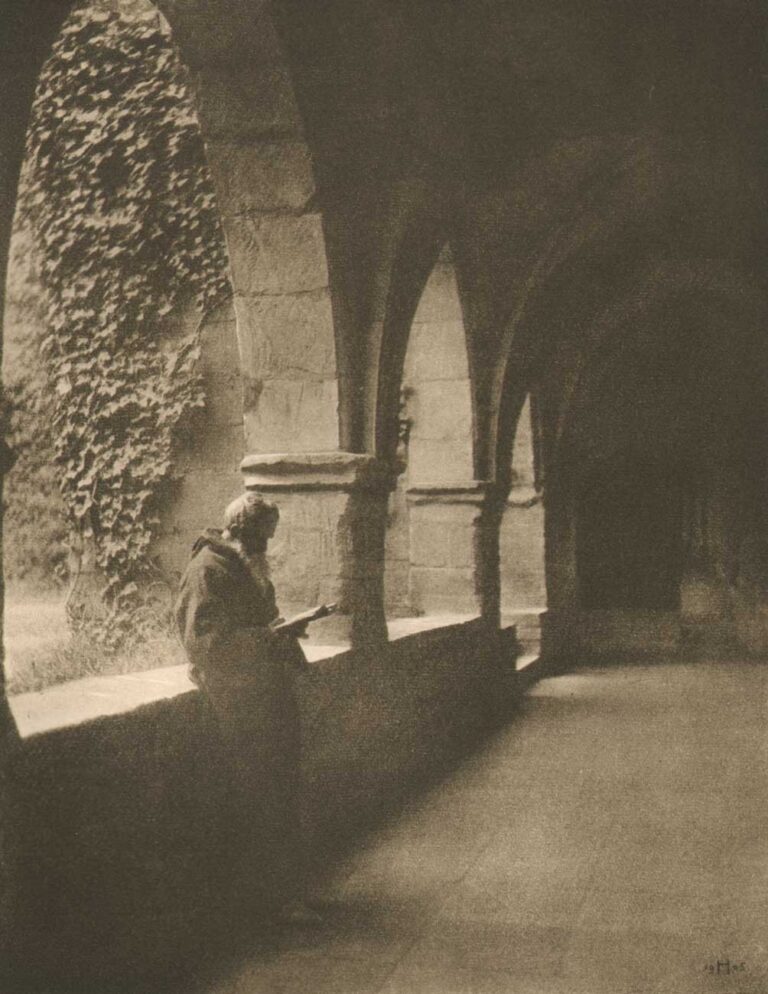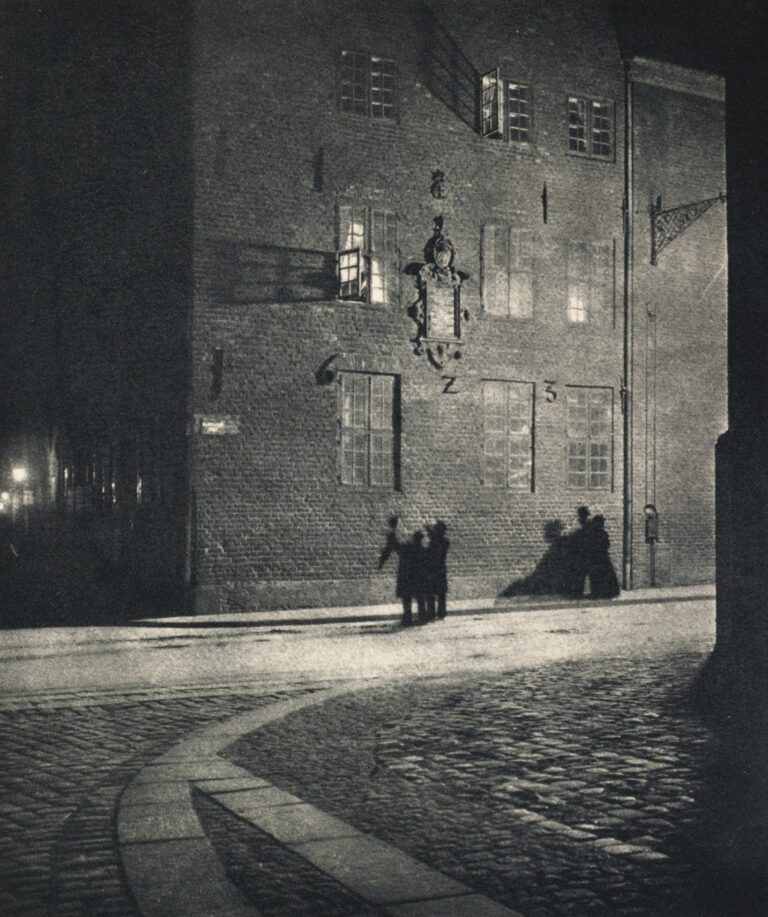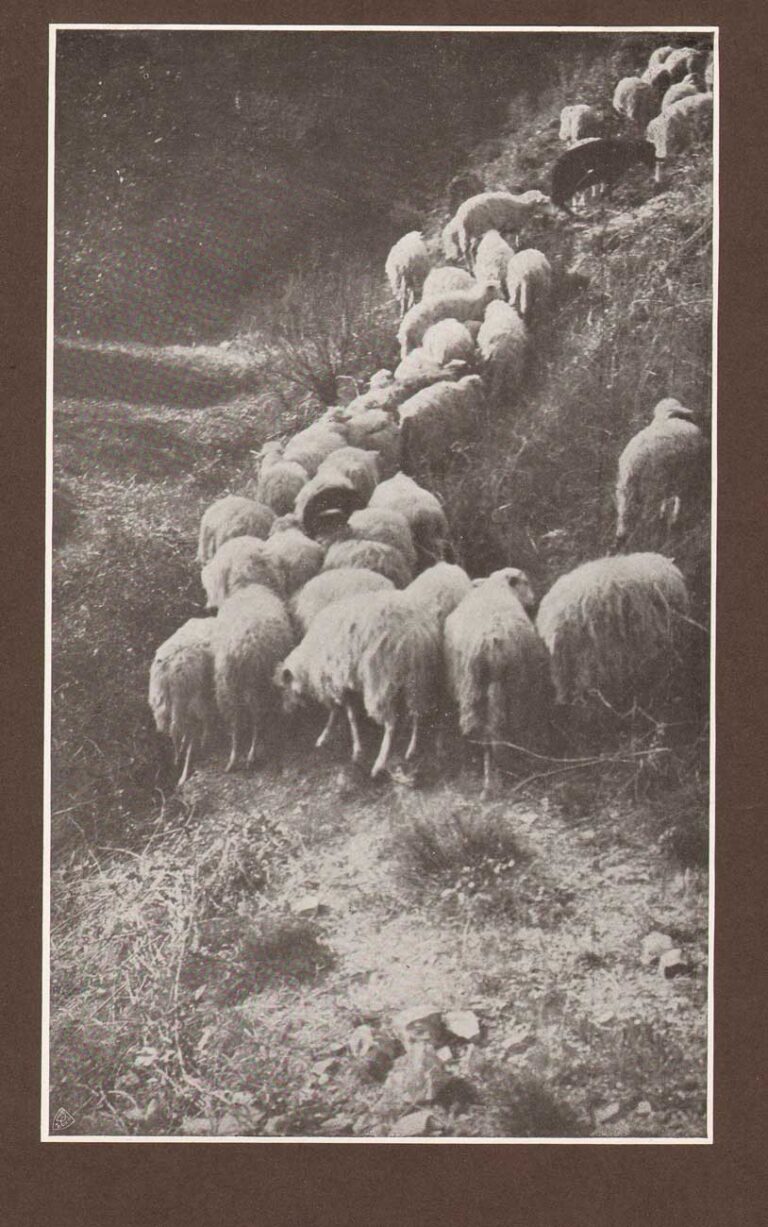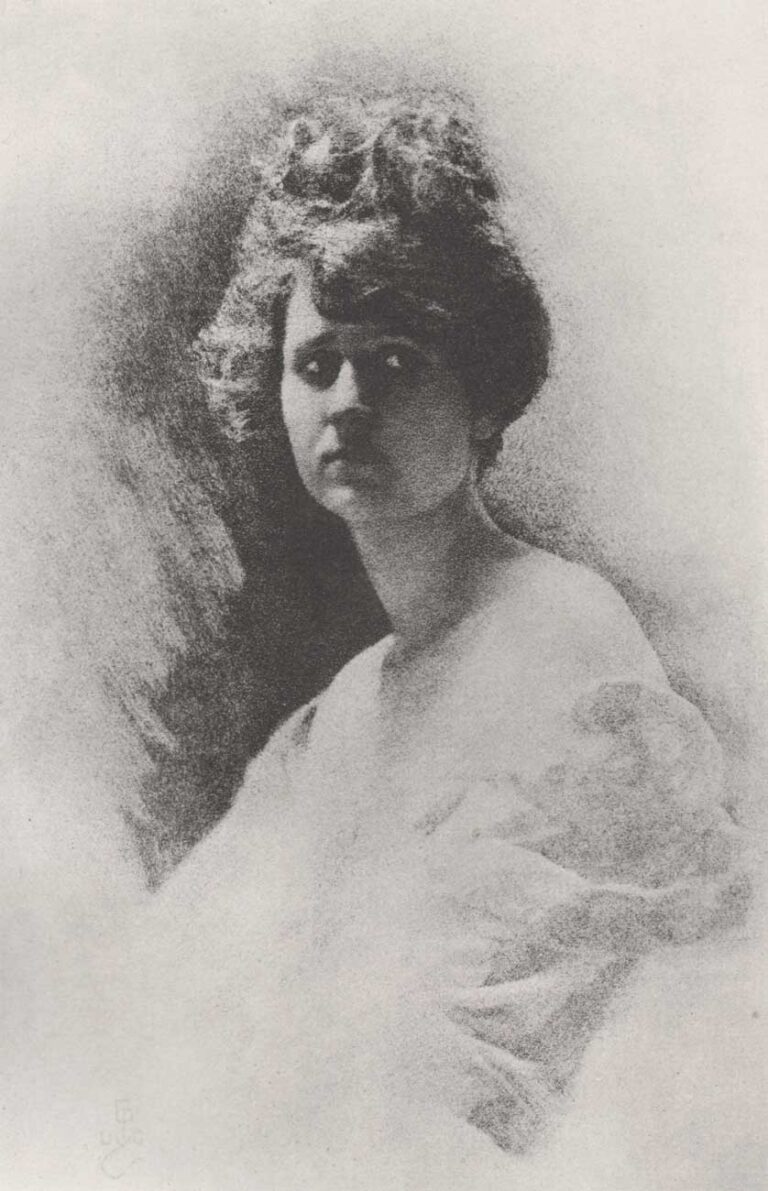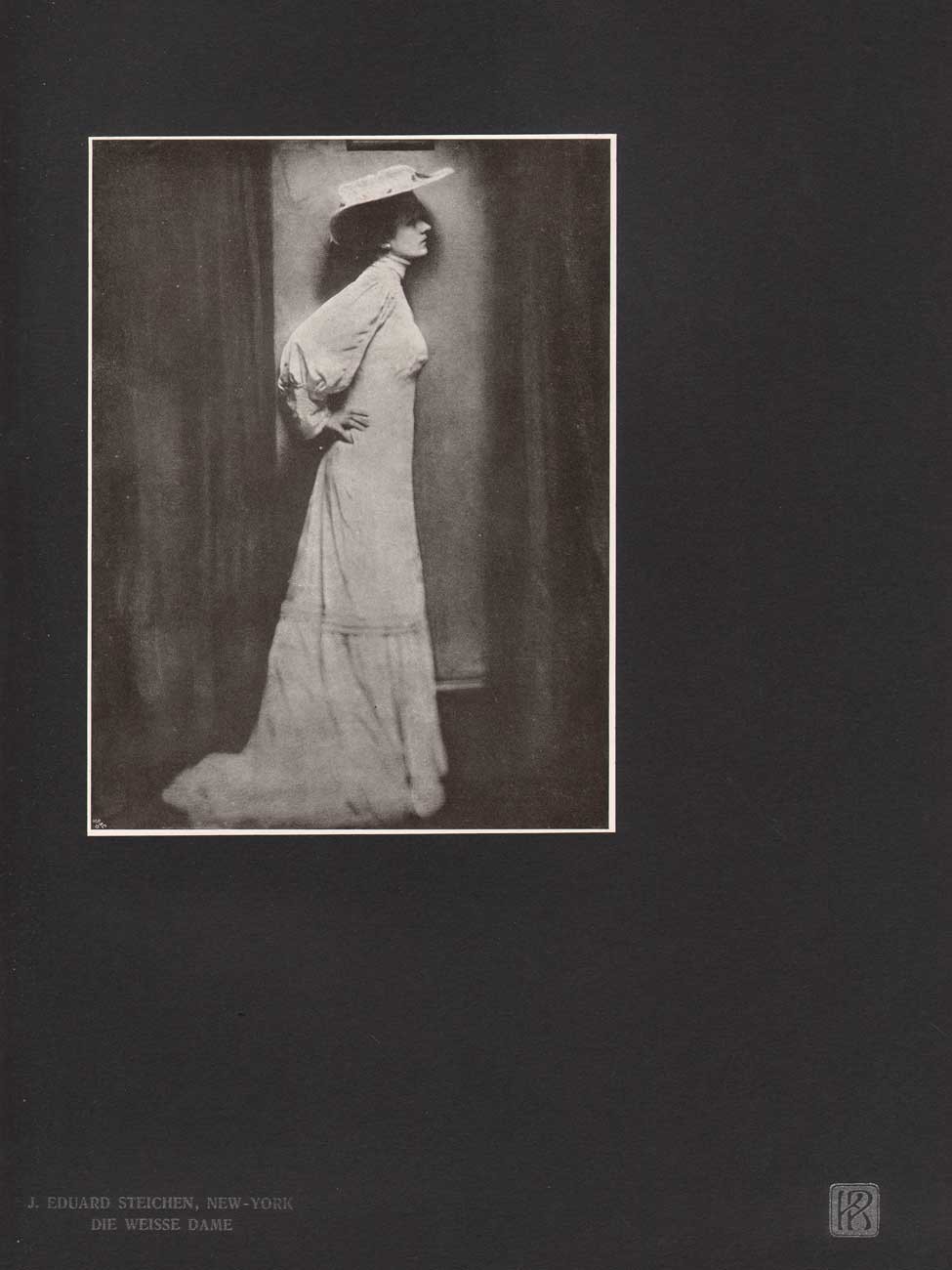
Die Weisse Dame
By the time this now well-known Edward Steichen photograph was first taken in late 1903-early 1904, (1.) the subject- Adelaide Mott Barclay, (born 1884) a member of New York aristocracy, was newly married to Algernon Keen Boyesen, the youngest son of novelist Hjalmar Hjorth Boyesen, a Professor at Columbia College in New York City who had died in 1895. Some of her accomplishments are summarized in the annual: Who’s who in New York City and State for 1911:
Adelaide Mott Barclay. Managing editor Cosmopolitan Magazine, 1902-03. Contributed short stories, poems, etc., to periodicals. First story published In Lippincott’s Monthly, 1902. Author: A Passion In a Suburb (play In one act), produced at Berkeley Lyceum, N. Y. City, Mar., 1904. Invalid, 1905-06, operated upon for appendicitis, unsuccessfully, Sept., 1905, but successfully by Dr. W. T. Bull, May, 1906; has contracts for several plays, etc. Mem. Alpha Delta Phi. Lives half of each year In Paris and Rome. Club: The Strollers (N. Y. City). Address: “The Willows,” Westbury, L. I.. N. Y.
In 1909, the following profile of Adelaide Boyesen appeared in the society pages of a California newspaper:
NEW YORK. In the artistic and literary set of New York, Mrs. Algernon K. Boyesen holds the enviable position of being one of the favored few who are always necessary at an affair which is “really of the intellectual flavor. Apart from her brilliancy, her wit and her charm of manner, she Is strikingly beautiful. She has been described aptly as a woman who would have been a favorite model of the great Gainsborough. Tall, and with the truly “grand manner” In her bearing she looks the very type of the court ladies of the eighteenth century, whose charms are still preserved for us on canvas. As the daughter of the late Henry A. Barclay,, she comes of New York’s, aristocracy and her maiden name of Adelaide Mott Barclay showed her relationship to the famous Motts. Her mother was Clara Oldfleld Wright. Before her marriage, Mrs. Boyesen not only followed the usual out-of-door sports of the modern athletic girl, but also gave play to the artistic side of her nature by studying fancy dancing. Her grace and originality won the highest praise from those who were fortunate enough to witness her at the private affairs where she appeared. Because of her artistic temperament, too, none of her friends were surprised when she married the versatile young author and playwright, Algernon Boyesen, the son of the late Dr. Hjalmar Hjorth Boyesen; who was famous as a poet and novelist and for many years professor of Germanic literature at Columbia University. As everyone expected, the match has proved ideal. (1.)
Apparently, the marriage was not meant to be. She divorced and remarried Carlos G. Mayer in Paris, France on Oct. 6, 1917. No other details, including her death, are known at this time.
In 1906, Alfred Stieglitz included The White Lady as an halftone plate in the Steichen Supplement of Camera Work.
Image shown on full black art-paper mount with margins only slightly cropped.
Translated title: The White Lady
other: The White Lady: Mrs. Boyesen (3.)
1. Femme en Blanc (Woman in White) was exhibited at the Salon International de Photographie hosted by the Photo Club de Paris which opened on May 3, 1904. Listed as cat. # 666.
2. excerpt: The Oakland Tribune (CA): May 18, 1909
3. The Boyesen reference is included in the catalogue of the Twelfth Annual Exhibition of the (Linked Ring) Photographic Salon, 1904 as cat. #127. Steichen originally printed The White Lady in gum bichromate. Another reproduction is used with examples from the American Photo Secession movement illustrating the article The Artist of the Camera in Munsey’s Magazine: Sept. 1906: pp. 695-702.
